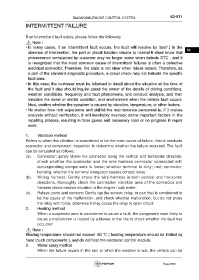Page 2563 - Foton Workshop Manual - Sauvana
P. 2563
DIAGNOSIS-ENGINE CONTROL SYSTEM 62-511
INTERMITTENT FAILURE
If an intermittent fault exists, please follow the following
Note :
• In many cases, if an intermittent fault occurs, the fault will resolve by itself ( in the
absence of intervention, the part or circuit function returns to normal It show know that 62
phenomenon complained by customer may no longer occur when detects DTC , and it
is recognized that the most common cause of intermittent failures is often a defective
electrical connector. Therefore, the state is not clear when failure occurs. Therefore, as
a part of the standard diagnostic procedure, a circuit check may not indicate the specific
fault area.
• In this case, the customer must be informed in detail about the situation at the time of
the fault and it also should inquire about the owner of the details of driving conditions,
weather conditions, frequency and fault phenomena, and conduct analysis, and then
simulate the same or similar condition, and environment when the vehicle fault occurs.
Next, confirm whether the symptom is caused by vibration, temperature, or other factors.
• No matter how rich experience and skillful the maintenance personnel is, if it makes
analysis without verification, it will inevitably overlook some important factors in the
repairing process, resulting in false guess and necessary road or no progress in repair
work.
1. Vibration method
Refers to when the vibration is considered to be the main cause of failure, then it conducts
connector and component inspection to determine whether the failure occurred. The fault
can be simulated as follows:
(a). Connector: gently shake the connector along the vertical and horizontal direction,
check whether the connector and the wire harness connector connected with
corresponding components is loose; whether terminal is dirty; rust; corrosion;
bending; whether the terminal elongation causes contact loose.
(b). Wiring harness: Gently shake the wire harness in both vertical and horizontal
directions, thoroughly check the connection vibration area of the connector and
harness disconnection situation in the engine / cab meter.
(c). Relays: parts and sensors: Gently tap the sensor, relay, or part that is considered to
be the cause of the malfunction, and check whether malfunction, but do not press
the relay with force, otherwise it may cause the relay to open circuit.
2. Heating method
When a suspected area is considered to cause a fault, the component most likely to
cause a malfunction is heated by a blower or the like to check whether the fault has
occurred
Note :
Heating temperature should not exceed 60 ℃ ( heating temperature should be limited by
hand touch components ), and do not heat the electronic control module.
3. Water spray method
When the failure occurs in the rain or when the weather is wet, the vehicle can be
Page 2563

